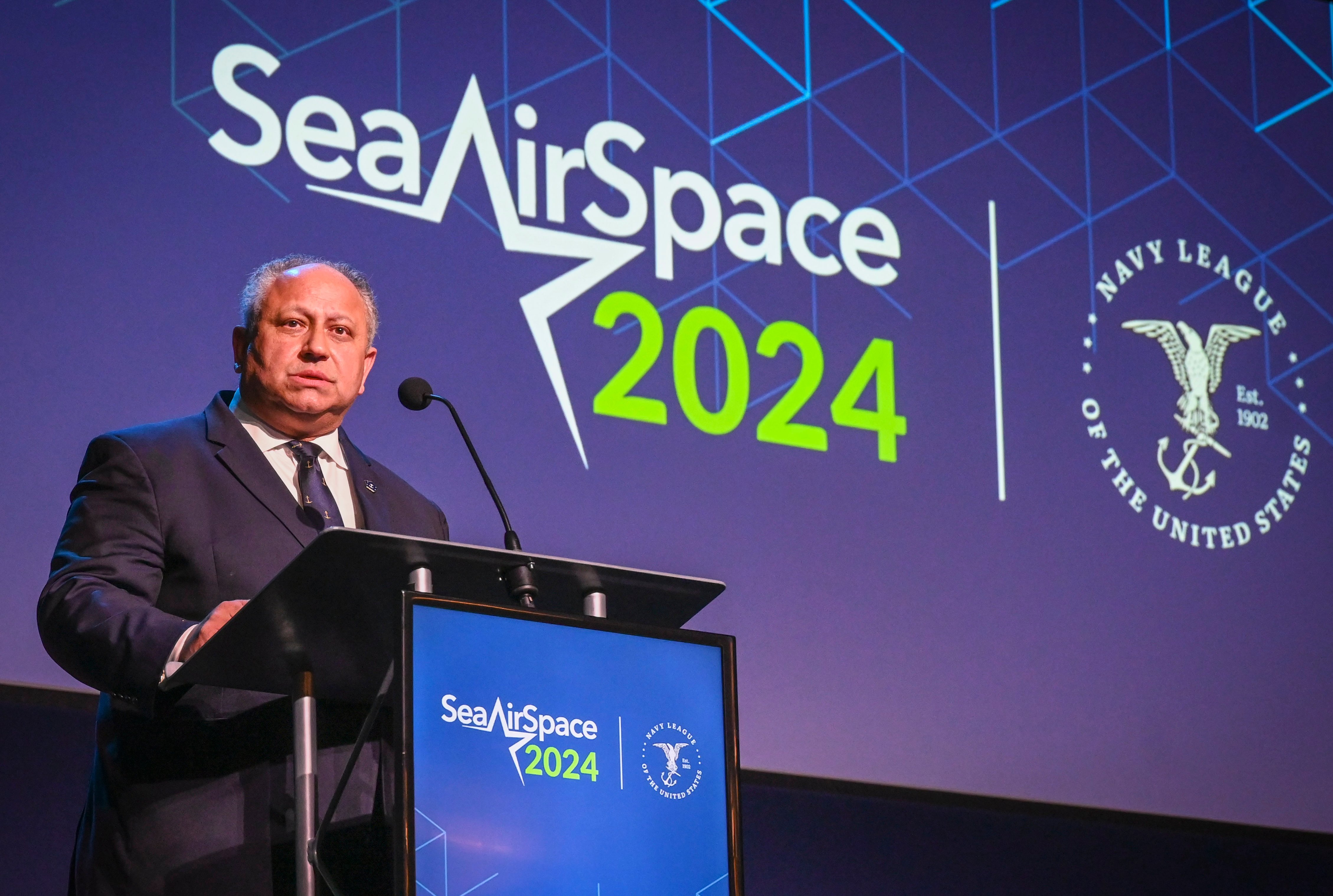
NATIONAL HARBOR, Md. – A new Navy office is assessing how to fix the years of delays plaguing the service’s major shipbuilding programs, Secretary of the Navy Carlos Del Toro said on Tuesday.
Del Toro ordered his Office of Strategic Assessment to perform a “deep dive” on how the service can implement recommendations from his recently released 45-day shipbuilding review.
“I’ve also tasked OSA to develop innovative new approaches for how the Navy can better organize itself to procure ships more effectively,” Del Toro said in remarks at the Navy League’s annual Sea Air Space symposium.
“I created OSA for just this kind of purpose: to propose data-driven assessments and recommendations that will help drive smart choices for our department.”
The results of the 45-day review, which the Navy unveiled last week, included several bullet points for improvement that ranged from altering acquisition approaches to evaluating the service’s workforce. But officials during the review’s rollout acknowledged that the assessment is a glimpse of where the Navy currently stands and is not a wholesale roadmap for how to fix the delays.
Following the review Del Toro called for in January, the secretary said the service is evaluating the recommendations and not waiting to move forward.
Part of that effort is getting the new Constellation-class frigate program, which the Navy says is currently three years behind schedule, to a better place amid design maturation challenges and struggles developing a skilled workforce at Fincantieri Marinette Marine in Wisconsin.
“We directed Admiral Downey for example, to move many of his engineering designers out of NAVSEA, and go up to Fincantieri to sit side by side with the design team at Fincantieri so that we can actually get the digital twin, or the digital copy, of the frigate done by hopefully October or the end of this year, as quickly as possible,” Del Toro told USNI News at the symposium. The secretary was referring to Naval Sea Systems Command chief Vice Adm. James Downey.
“We actually met with Fincantieri to try to encourage them, for example, to put more designers in place through their subcontractor, Gibbs & Cox, so that we can move faster on the engineering design that needs to be completed by October [or] December,” Del Toro continued. “So we are moving out in many many different ways. We just haven’t consolidated into a broader plan that has been made public.”
Last week, Downey told reporters that the industry and government team had nearly 80 percent of the frigate’s detail design complete and wanted it finished by the end of the year. But a service official also told reporters in August of 2022, when the Navy told Fincantieri that the yard could begin cutting steel for the lead ship, that the detail design was about 80 percent finished at the time.
Asked about the ongoing design maturation and how much of the program’s delay is due to workforce challenges or design issues, Del Toro said he does not blame the shipyard or the Navy, but wants to look ahead.
“I’m not here to put blame on mistakes that were made in the past either by Fincantieri or the Navy,” Del Toro said.
“I want to move this forward more aggressively to a better place. And so we’re going to work as a team, with industry, with the government, to get us there quicker. And that’s what we’re doing.”
The Constellation-class frigate is based on Fincantieri Marinette Marine’s FREMM parent design that’s in service with the Italian and French navies. But the U.S. Navy and design agent Gibbs & Cox have heavily modified the parent design to meet U.S. survivability standards. While the detailed design is still incomplete, Fincantieri is on contract to build four frigates. The lead ship was scheduled to deliver in 2026, but is now expected to deliver in 2029.
Last week, Downey cited the difficulty hiring and retaining workers in Marinette and Fincantieri’s heavy workload – the yard is wrapping up the Littoral Combat Ship line while also building Saudi Arabia’s multi-mission surface combatants and trying to get the frigate line going – as reasons for the three-year delay.
During his remarks at the conference, Del Toro said the program executive offices within NAVSEA have “significant plans on how to address the shortfalls” in their respective programs that the 45-day review identified.
He pointed to multi-year procurement strategies, multi-ship buys, and advanced procurement to get materials to the shipyards earlier – acquisition strategies the Navy currently employs across its shipbuilding enterprise – as options the service is evaluating to address the delays.
“Those are the many things that we’re going to be looking at, in addition to how can the government perhaps provide a little bit better oversight in some cases, working side by side with the shipbuilder, instead of being here at NAVSEA and having the shipbuilder be somewhere else so that we can address these problem more quickly as well too ” Del Toro said. “So I think there’s a lot of promise about being able to reduce those timelines into the future.”





